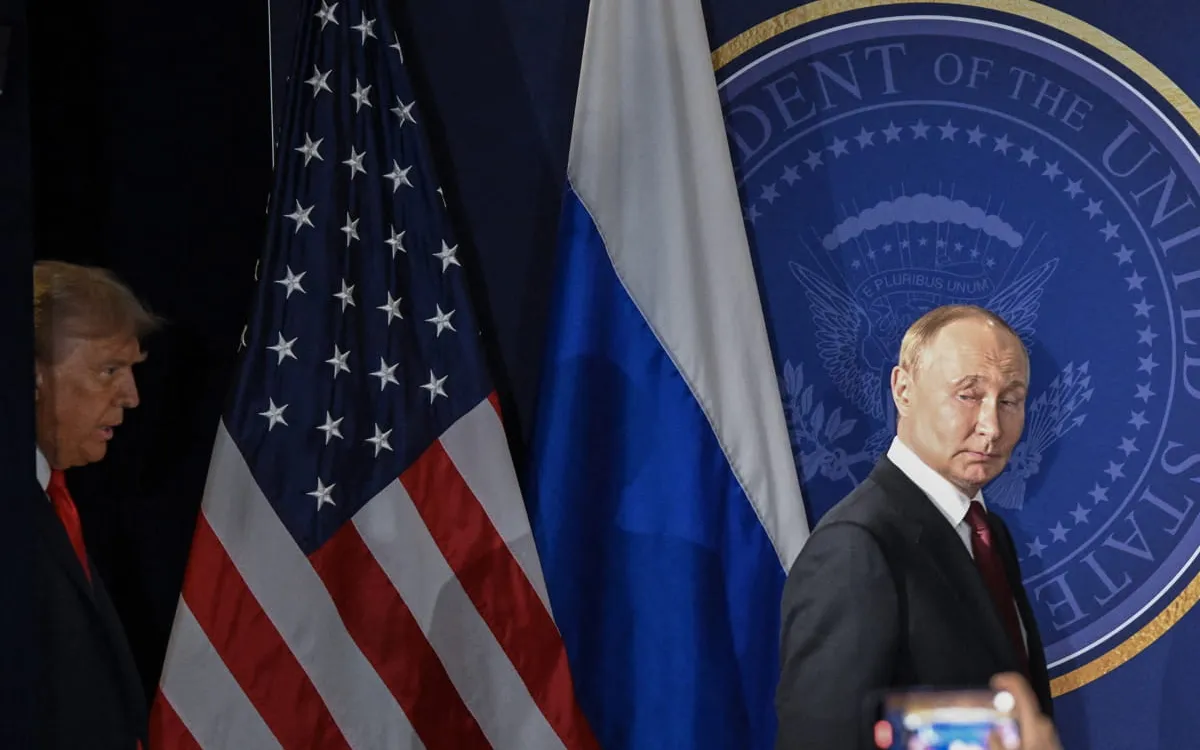
Described by Boris Johnson as “the most vomit-inducing episode in all the tawdry history of international diplomacy,” the highly anticipated Alaska summit between the US President and the leader of Russia concluded on Saturday morning, Eastern Australian time. The statements released by the Presidents of America and Russia following nearly three hours of discussions have since sparked intense analysis and debate.
During the summit, Vladimir Putin generously infused his remarks with flattery directed towards Donald Trump. He reinforced the Trumpian narrative suggesting that the ongoing war would not have erupted had Trump remained in office. Putin noted, “I tried to convince my previous American colleague that it should not be the point of no return when it came to hostilities. Trump has said that if he was President, there would have been no war … I can confirm that.”
Putin also reminisced about the shared history between America and Russia, expressing friendliness towards the United States as a neighbor. Despite these gestures of goodwill, Trump did not accomplish his primary objective for the meeting—a ceasefire in Ukraine. The question of how Trump will respond to this perceived failure, despite the camaraderie displayed during the summit, remains uncertain.
One of the more evident outcomes from the summit was that Putin appeared significantly more upbeat than Trump. Arriving and departing with a broad smile, Putin seemed to revel in his status as the biggest winner of the summit. He managed to concede nothing during the discussions, avoiding further sanctions and securing a commitment from Trump for a subsequent meeting, potentially in Moscow.
Russian state media has celebrated the positive implications for Russia stemming from the summit, highlighting the embarrassment faced by American soldiers who rolled out the red carpet for Putin. This diplomatic encounter has allowed Putin to delay any discussions of a ceasefire or resolution to the conflict, enabling him to maintain his military actions against Ukraine for the foreseeable future.
Perhaps more troubling for observers is the newfound understanding Putin has of Trump’s disposition. The Russian leader’s smile as he exited the summit suggested that he is confident in his ability to manipulate future discussions. Putin’s flattery may also be a strategic move to ensure that upcoming meetings are held one-on-one, excluding discussions around Ukraine. This tactic lays the groundwork for further negotiations with Trump, as Putin is astute enough to recognize that he won’t achieve all his goals in a single meeting.
Moreover, Putin made it clear that the underlying issues fueling the conflict must be addressed. His refusal to back down from his key objectives—which include undermining Ukraine’s sovereignty, dismantling its defensive capabilities, and preventing Ukraine from joining NATO—signals that future talks will grapple with these contentious points. This presents a significant challenge for Ukraine and European leaders who are cautious about setting any precedents for handling future Russian aggressions.
The events of the weekend have severely diminished any remaining hopes among Ukrainians and many Europeans that Trump might distance himself from his admiration of Putin and begin to advocate for Ukraine’s pursuit of a just peace. In the hours following the summit, Trump endorsed Putin’s viewpoint that a ceasefire was unnecessary, suggesting that Ukraine and Russia should leap directly into negotiating a war termination agreement. Trump stated on his social media platform that, “the best way to end the horrific war between Russia and Ukraine is to go directly to a Peace Agreement, which would end the war, and not a mere Ceasefire Agreement, which oftentimes do not hold up.”
This position implies that Ukraine must continue to fight for its survival while negotiating under significant pressure. Ironically, Trump’s assertion that ceasefires “do not hold up” overlooks the fact that Putin has consistently violated every peace agreement he has brokered over the past two decades.
In the aftermath of the summit, Ukrainian President Volodymyr Zelenskyy engaged in a lengthy phone call with Trump, during which he discussed the potential for American involvement in guaranteeing Ukraine’s security—a notable shift from the Trump administration's previous reluctance to provide such assurances. Zelenskyy is scheduled to visit Washington, DC, this week for discussions with Trump, accompanied by other European leaders, including Germany’s Friedrich Merz, France’s Emmanuel Macron, and the UK’s Keir Starmer, among others.
While some may argue that the Alaska summit was a success due to the fact that no Ukrainian territory was conceded, only the most optimistic could arrive at that conclusion. Editorials from Ukrainian and other international news outlets have characterized the summit as a “stab in the back,” further solidifying the perception that Trump’s admiration for Putin renders any support for Ukraine unlikely.
Within 48 hours following the conclusion of the Alaska summit, Ukraine announced the initiation of serial production for a new long-range missile named the “Flamingo,” boasting a range of 3000 kilometers. This development signals to both America and Russia that Ukraine retains agency and will persist in its campaign against Russian targets. The reality remains stark: the summit has not altered the ongoing conflict. Fighting continues unabated, with Russia persisting in its aerial assaults on Ukraine both before and after the Alaska discussions. For Ukrainians, the war will continue without respite.